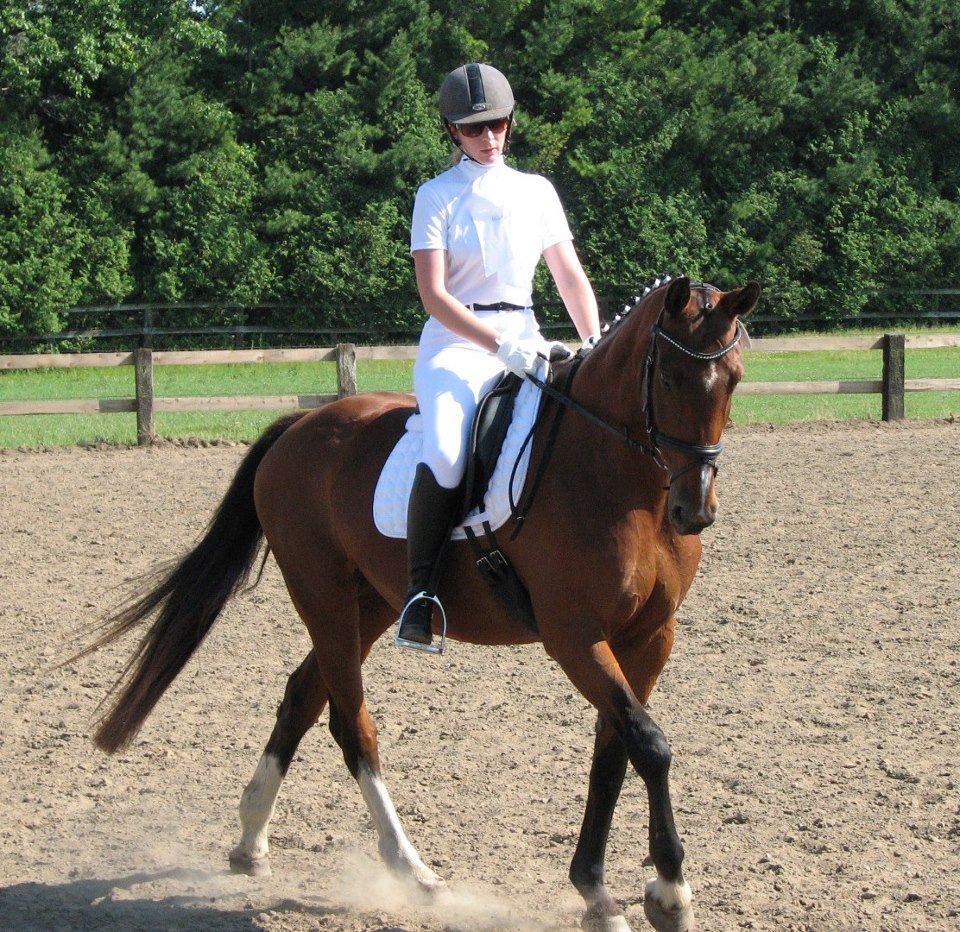For the majority of my second “career”, I have been striving to move up through the various levels in the sport of dressage while my alter ego endeavours to save the urban forest as LEAF’s Field Operations Supervisor.
Dressage is a sport of precision, requiring regular training and harmony between horse and rider. The sport has been part of the summer Olympics since 1912, but originally dates back to medieval times when horses trained in dressage, and the more advanced Haute École (or “airs above the ground”), helped knights fight in battle. While I’m not ready to go leaping through the air on my horse, I have been training at my current riding stable (European Warmblood Stallion Zentrum – EWSZ) in London for the past ten years.

I can’t say I have thought much about how my two “lives” intersect until Matthew asked me to write about horse life and its relationship with trees. Now you are probably wondering what possible connection there could be between horses and the urban forest, but there are many!
Urban sprawl is expanding its tentacles of suburbs, parking lots, and big box stores causing a lot of horse stables to be slowly surrounded by cement instead of farmers’ fields. This also brings the stresses you would see on a typical street tree (salt spray, construction damage, pollution, etc.) to your local equestrian centre.
Horses, as you may guess, don’t always serenely walk around their outdoor space – they run, roll, dig, and rough-house with their friends. Just imagine the compaction found around tree roots from horses that have run beneath it repeatedly with each horse weighing over 1000 lbs (and you thought soil compaction was bad in newly developed areas!). Trees are also a cool place for them to relax during the summer when the air temperature is high, which leads to even more compaction at the base of the tree.

As a poor pruning job can be detrimental to tree health, the damage a horse can do with its teeth, stripping branches and leaves from any tree within reach is often worse.
Just like our Backyard Tree Planting Program, you have to know the soil in your paddock and make a good species selection based on that. Although in this situation, just getting any species that will grow, despite the hungry horses and bad soil conditions can be a challenge.
Tree species for equestrian properties must also be specially selected to ensure that the species chosen is not toxic for the horses (*cough cough* red maple) as horses’ digestive systems are incredibly sensitive. Any unbalance can lead to colic, a blockage or twist in their intestines which can cause death if left untreated.
Forest tracks and other green spaces are also important to equestrian enthusiasts because it gives us a place to go to get out of the arena and be a part of nature. It is also a good place for invisible monsters to hide behind trees and spook our horses (who are really just checking to see if we’re paying attention).
Overall trees play an important role in our horses’ health and get greatly abused for the privilege. On a hot and sunny summer day I am very grateful for the trees that surround our outdoor riding arena, giving me a short break from sweltering to death in the sun. Share your horse and tree related stories below and strengthen the awareness of how important trees are to our equestrian pursuits!
